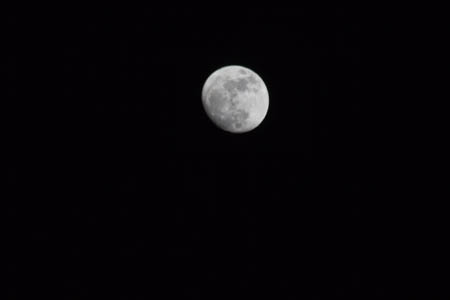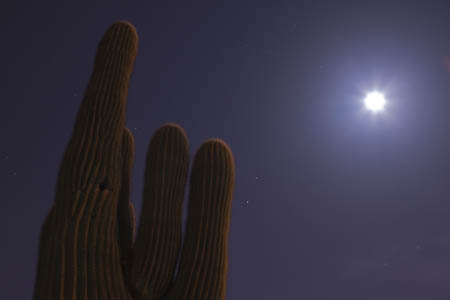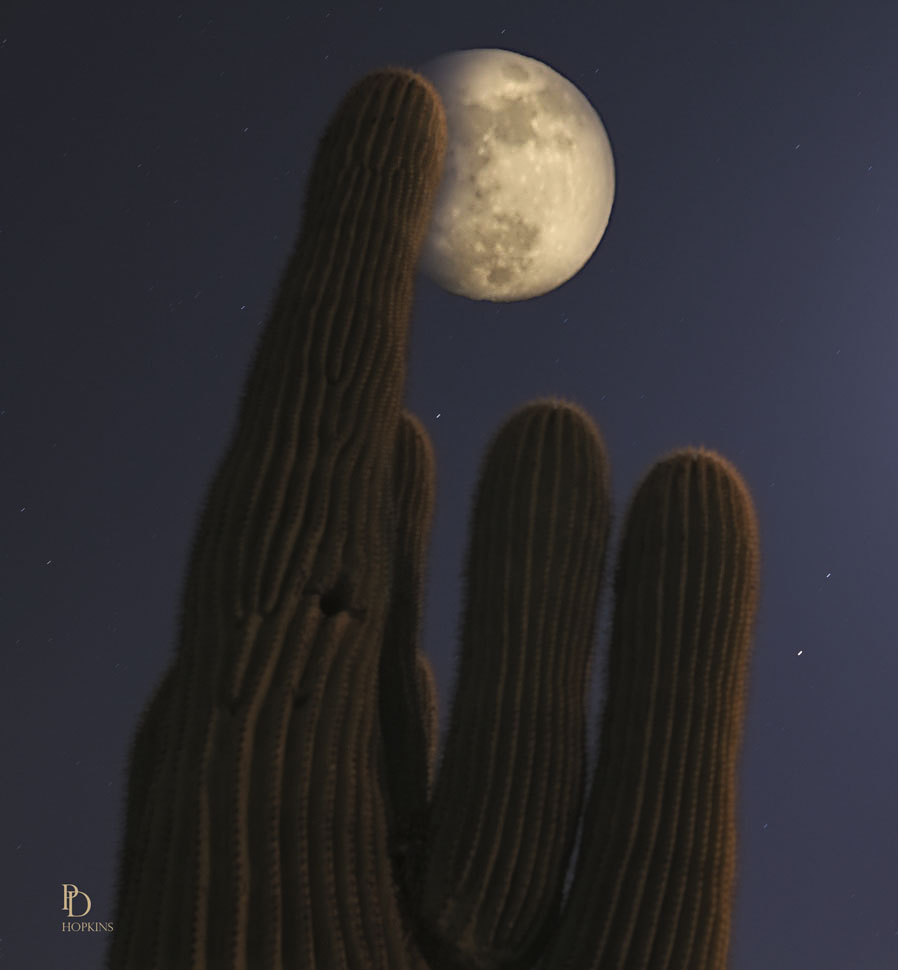Earlier this evening, accompanied by friend and photographer, Greg Bourque I went out to do some night photography. Our goal was to photograph a Saguaro cactus with the nearly full moon behind it. A classic desert night scene. We had no trouble finding the cactus (within a block of our home in Scottsdale) and we quickly found a suitable vantage point for the pictures.
At this time of the evening, the moon was very high in the sky and very bright. We set up very close to the cactus in an effort to include both the cactus and the moon in the picture. With a dark, night sky the contrast between the full moon and any other subjects in the picture is extreme. The moon was so bright that it was impossible to get the correct exposure for both the moon and the cactus in a single shot.
We did the moon first. The camera was set to achieve a very quick exposure, limiting the amount of light admitted to the camera’s sensor. This gave us a good picture of the moon, but everything else, including the cactus is too dark to see, Here’s that first picture.

Next we turned our attention to the cactus. The light was very subdued on the shadowed side of the cactus (away from the moon) and so we tried a couple of ways to get the level of detail we wanted. First choice was to use a flash, but that did not look very good. The brilliance of the flash did not allow for a natural appearing gradient to the more subdued ambient light. We then went to a long exposure and with a little experimentation, we zeroed in on the exposure we wanted. We had a flashlight along to help us see what we were doing in the dark and Greg came up with the idea that we should add some “light painting” on the cactus.Great idea! We stood at right angles to the cactus and swept its edges with the flashlight’s beam. This light augments the ambient light and highlights one side of the cactus, the side on which the moon is shining. This works well with a long exposure (30 sec in this case) when the light accumulates slowly on the sensor. There is time to “paint” light on the subject and it gets picked up in the image. Here’s that picture of the cactus.

A few things worth noting here. Firstly, you can see the cactus detail quite nicely and the exposure is pretty much as was visible to the eye at that time of the evening. The moon, still in the picture frame is very over-exposed and though it makes for a reasonable picture, that’s not how it looked to the eye. It looked like it does in the first picture, above. Also, the “painted” light on the right edges of the cactus is warmer than the light from the moon. How can that be?
To get a single, “balanced” picture it was necessary to create a composite of the two, using Photoshop. I chose in this case to crop out any residual light from the moon in the cactus shot and insert the moon from the first picture. I adjusted the white balance and applied an orange photo filter to the moon to achieve a consistent warmth throughout the scene. I also lowered and enlarged the moon, placing it partly hidden by the cactus. The result is the following picture.

Is this really photography? Some would take the view that photography is done uniquely with a camera. I think photography has changed dramatically in recent years and we are now able to produce pictures that we weren’t able to do with a camera alone. I see this result as a picture. It may or may not be a photograph, but its origin is most certainly based in photography.
